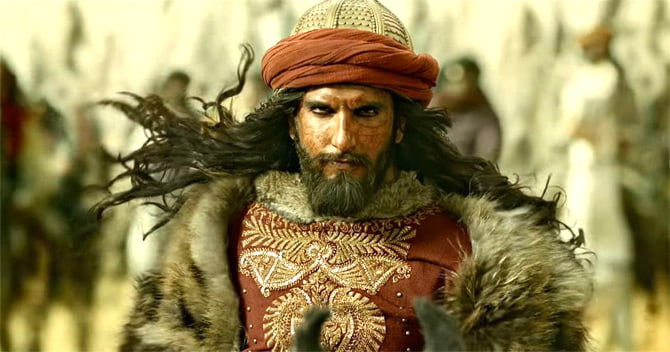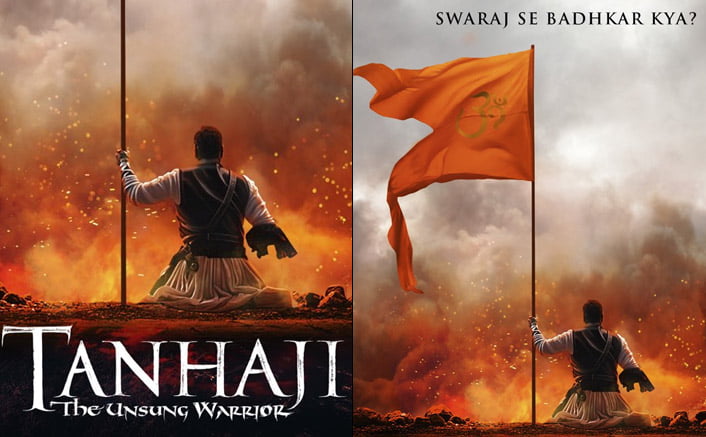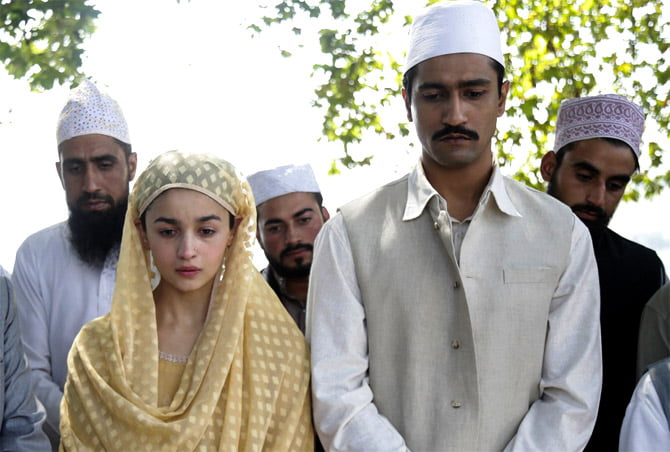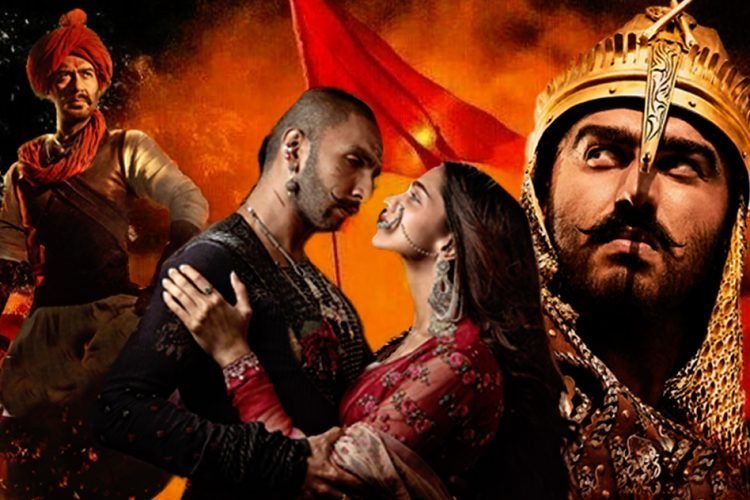Indian cinema has witnessed various eras of themes from romantics to action to thriller but one of the absurd themes that have become favourite for Bollywood is Islamophobia. Yes, Indian film industry is selling Islamophobia and the crew is increasing day by day. Kohl-ed eyes, devilish gaze, kurta, meat eating style and aggressively dancing are some of the standards these films have set for Muslim characters. Over the decades, different templates and stereotypes where set from a ‘terrorist’ or a ‘jihadi’ to now an ancient devilish ruler mostly a Mughal emperor. The changes undoubtedly differ from the social, political atmosphere of the country.

Nandita Das, actor and film maker says in an article, “Mainstream cinema shows different portrayals of Muslims, based on popular perceptions of the community. Over the years, Islamophobia and the marginalisation of Muslims have impacted producers’ and directors’ choices in excluding and representing Muslim characters.”
Indian Cinema And Politics
The mood of Indian cinema has always been synonymous with the political atmosphere of the country. Over the past few years, there has been a commercialisation of nationalism marketed through advertisements, films, TV shows etc, and therefore consequent blatant Islamophobia. However, in the post-Independence period, in 1960s, movies like Amar Akbar Anthony echoed national and secular ethos of the country.

Then, there were films on the lines of communal riots and bomb blasts like Phantom, Anwar, and Firaaq. Currently, there has been a trend of historical films that portray an idea of taking pride in a glorious past or the current present. And many times the enemy is carved out from the Muslims and the protagonist through Hindus. The twisting of history and negative personification of every Muslim ruler or mostly Mughals and pushing a certain kind of Hindu-Muslim narrative is what many within the industry have called out.
How Islamophobia Is Personified In Film Production?
Filmmaker Neeraj Ghaywan points out in The Quint’s Film and Politics Roundtable about how Islamophobia is personified in films. “You look at the colour palette, or how the production design is done, while portraying Muslims. It’s mostly blacks, it’s mostly dimly lit, and it’s shot at low level to have a demonising effect. But as you show the other side, it’s all flowery and bright lights and shot at an eye level.”
For instance, Tanhaji pushes an Islamophobic idea of fight against ‘swaraj’ and freedom of Hindustan which is technically not possible in 1600s. There is a sense that the battle was fought on religious lines. But was it so? A simple Google search will tell us that, ‘The battle of Kondhana was fought between Tanhaji Malusare, commander of Maratha Empire and Udaybhan Singh Rathore, a Rajput fort keeper under Jai Singh.‘ The semiotics of poster can be seen again with colour contrast of sun vs. darkness.
Also read: Here Are 5 Recent Islamophobic Legislations By The BJP Government

The devil, kohl-eyed lustful man who dances with use of black theme and colour palette as if sun never rises in their side while the white side having bright, bloomy days full of pride and no one can do any wrong in the land. The use of semiotics to present a kind of narrative is what is trending.
The biggest hit of Bollywood in 2018, Padmavat, which had faced much fire for different reasons altogether, portrays luscious, Muslim ruler totally drowned in his pride and evil plans, that sees women with most lustful eyes, oppresses his wife and chomps chunk of meat from his teeth. This representation and pushing of a certain narrative of Islamophobia by showing how cruel the evil and enemy Muslim rulers were, paints a certain Islamophobic picture and echoes for stereotyping and further marginalisation of Muslims today.
The recently released film Tanhaji has traces of this pattern where the enemy and the hero have what Meghnad Bose in a The Quint article calls, “Black and white personification of characters.” The devil, kohl-eyed lustful man who dances with use of black theme and colour palette as if the sun never rises in their side while the white side having bright, bloomy days full of pride and no one can do any wrong in the land. The use of semiotics to present a kind of narrative is what is trending. The twisting of history to suit the narrative that you want to put forward again crystallises in the minds of viewers and create a sense of ‘us’ vs ‘them’ in daily lives as well. As righty said, Raazi portrays a dignified and clear story without a narrative of a villain or a hero but it is clear who is the enemy. The husband, Vicky Kaushal, a Pakistani officer does not fit into the evil, devilish, kohl-eyed maniac trend of portraying a Muslim man.

Why Does Bollywood’s Representation Matter?
There is absolutely no doubt about how media and films reinforce stereotypes and shape our gaze about a particular community. It is also very evident how the representation gets crystallised in popular culture. This ‘othering’ and bad portrayal again creates a sense of “we” and “they” in society resonating Islamophobia which has real consequences.
Also read: Discrimination Faced By Muslim JNU Professor Hints Rising Islamophobia
Even in 2020, we are still waiting Bollywood to be free from slavery of money, selling what is ‘bought’ by the vast population of viewers like objectification of women, casteism, Islamophobia, among others. Bollywood needs to rise up and be more responsible in coming years.
Featured Image Source: The Logical Indian





Illogical article. While some bits of details regarding history can be disputed, fact remains that mughals are invaders from outside hindu bharatvarsha. They are mainly cruel liers who pillage, loot, forcibly convert as their gazwa-e-hind agenda continues, descendants of converts unfortunately choose that agenda instead of accepting their hindu heritage. SHAME!
Well, it’s actually pretty confusing tbh, Because some people say that Bollywood is hinduphobic while the others say that it’s islamophobic.
Well, in many instances, Bollywood has also portrayed Hindus as conservative, saffron clad fogeys, who beat women and strongly uphold the principles of the caste system
Well, that depends on the person’s affinity to faith. However, I find this kind of portrayal wrong on my part, both for Hindus and muslims.
Completely useless article. All the so called “islamophobic” films you mentioned are historical. Means they are based on facts and real people. On the other hand, the hinduphobic films are either fictional or deliberately set in dystopian future. A religious hindu doing puja, applying tika on his head is always depicted as conservative and fanatic.
Based on facts. Sorry but Khilji is far from the sultan with Khal Drogo like potrayal of Ranveer Singh
My god extremely biased active viewed from a franitical prism. There are lots of Bollywood films which are hinduphobic like pk,etc..
And the new web series like pataal lok, leila, sacred games all of these also are hinduphobic
Well…how things look depends on what coloured googles we wear….earlier movie makers had a burden of secularism due prevalent political philosophy…current films do not have…its okay to have Muslim character from History as a villain today…and as a rule of masala movie …villain should be shown detestable..
So he behaves rude…eats obnoxious food…etc.
Cause audience in India still wants it Black/white….hero as white and villain as Black….shades of grey are still unacceptable…or not entertaining….a villain can have some good qualities too…but still a villain overall…is unacceptable to audiences….same for Hero…he has to be role model….complete white…
film makers are there for money…they will make movies which will fetch money…